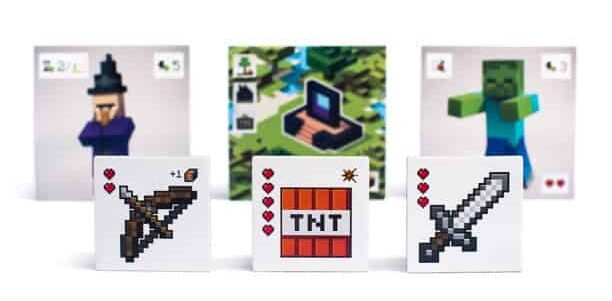Minecraft is one of those games that has managed to embed itself so deeply in popular culture that even if you haven’t played it before, chances are you’ll have some idea what it is.
The original video game is available on a wide array of platforms and consoles – you’ll be pleased to hear that it’s now available as a board game too! In this Minecraft board game guide, you can find out everything you need to know about this new edition of the popular world-building game.
Instead of navigating the Minecraft landscape on-screen, take part in an immersive, in-person experience which seeks to replicate the aspects of the video game that brought it so much success. Explore the Overworld; meet familiar foes like Creepers and Endermen; defeat mobs, and reform the landscape to suit your vision – all while scoring points according to the game’s rules.
You might consider yourself a Minecraft expert, but can you transfer your skills to this strategy-based board game? Read on to find out more, including how to play and – most importantly! – how to win.
Minecraft: Builders and Biomes – an Overview
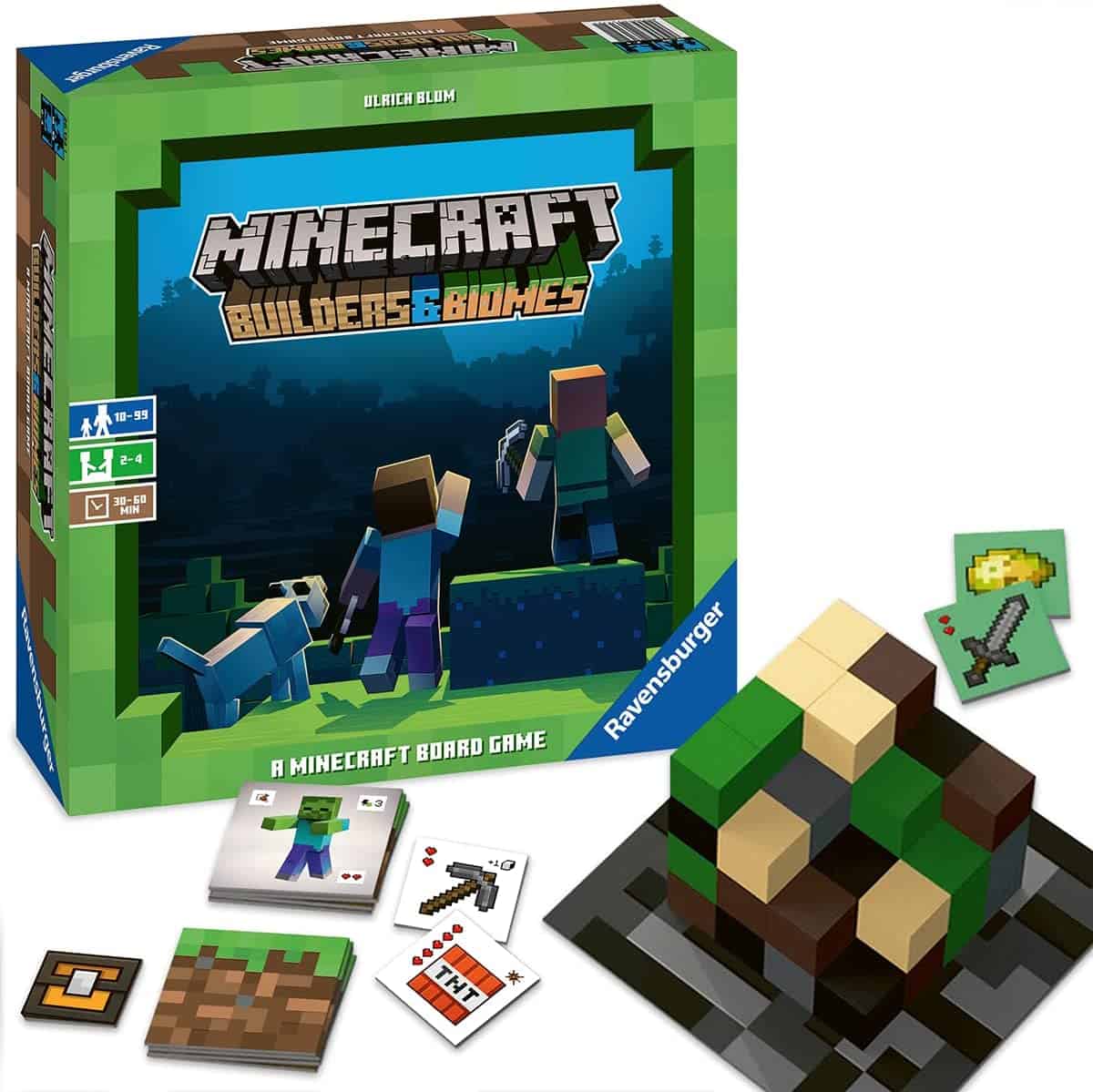
In Minecraft: Builders and Biomes, players earn points by building structures and creating large connected biomes of desert, forest, tundra, and mountain on their boards. They can also earn points by defeating mobs using weapons they have collected during the game.
As gameplay continues, scoring takes place, and the resource cube’s layers gradually deplete.
The game was first released in 2019 as a joint effort between Mojang Studios and Ravensburger, two highly experienced companies within the gaming industry. Its design can be attributed to Ulrich Blum, while the illustrators are Ninni Landin, Martin Johansson, and Martin Worister.
Are you looking for another well-designed game? If so, I’d recommend trying Sleeping Gods or King’s Dilemma.
As you might expect, Minecraft: Builders and Biomes very closely replicates the style of the original videogame with an almost identical look and feel. While it hasn’t won any awards, it’s widely stocked in some of the biggest stores in the country and has received a whole host of positive reviews.
When existing video games or movies get transformed into a board game, there’s often the expectation that the product itself will lack merit. iT It will only exist as a comparably poor by-product of the original version’s popularity, but that isn’t necessarily the case with Minecraft: Builders and Biomes.
This strategy board game is a welcome addition to the genre that holds its own against fierce competition. But more on that later…next, let’s quickly recap what Minecraft is all about for anyone who has been living under a rock for the past ten years.
What is Minecraft?

To put it simply, Minecraft is a sandbox video game that Mojang Studios created in 2009. Players make and destroy various kinds of blocks in three-dimensional worlds – the clue is in the name.
It began with two primary modes:
- Creative – players are given supplies; they don’t need to eat to survive
- Survival – players have to find their own supplies and food while interacting with block-like mobs, some of which are dangerous
However, today the game has four modes, with Hardcore and Spectator being added to the list.
There are no points to be scored in the original Minecraft video game; the purpose is simply to explore and survive. This can all sound a little…well, dull to the uninitiated. But trust me, it’s a strangely entertaining game, especially when you play with friends.
The original Minecraft took inspiration from Dutch games like Dungeon Keeper and Dwarf Fortress. While today’s version retains many similarities, in some ways, it is an entirely different game with added details and complexities.
With over 180 million copies sold worldwide, Minecraft has impacted the collective gaming psyche. The thousands of mods available to download online have certainly helped maintain the game’s popularity.
But does the video game’s success translate into a fun board game? That’s what I will discuss a little later in this guide. But, before that, let’s find out how to play Minecraft: Builders and Biomes.
The Aim of the Game
The aim is to score as many points as possible. This can be done by building structures and large connected biomes and defeating hostile mobs. The things that are so enjoyable about the original video game – particularly the creativity that it fosters – have been maintained, but with an added competitive element.
Once the third layer of the resource cube runs out, the game concludes, and the player with the most points wins.
How to Play Minecraft: Builders and Biomes
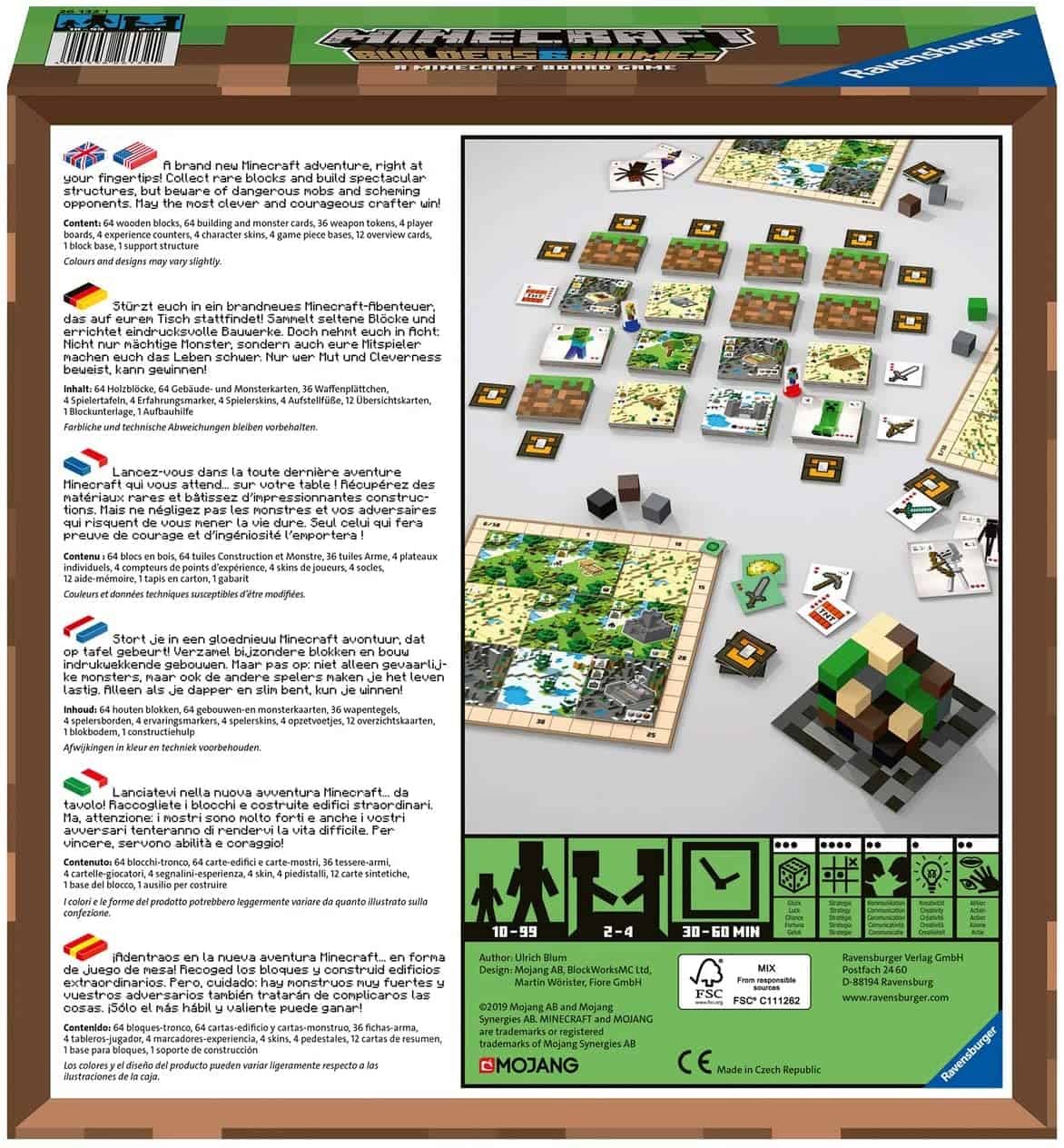
Here’s how to play the board game if you’re not already familiar with it.
Setup
Follow these steps to set the game up.
- Shuffle the 64 building and mob tiles. These should be divided into 16 piles (all face down), laid out in a 4×4 grid with enough space for game pieces to move between them.
- Shuffle the 16 colorless weapon tokens, placing one at the end of each column and row. They should be positioned face down in a 6×6 grid.
- Put the block base next to the grid, ensuring it’s within reach of all players.
- Fill the block base with 64 blocks – 16 wood, 14 sand, 12 stone, 10 obsidian, 12 emerald – in no particular order. Shake until the blocks form a cube and remove the support structure.
- Each player must now pick a color and take the matching game materials before placing their experience counter on space 0. Then they should shuffle their 5 weapon tokens, put them in a face-down pile, and choose a player skin.
- Place one set of the overview cards between players 1 and 2. The other set goes between players 3 and 4.
Playing the Game
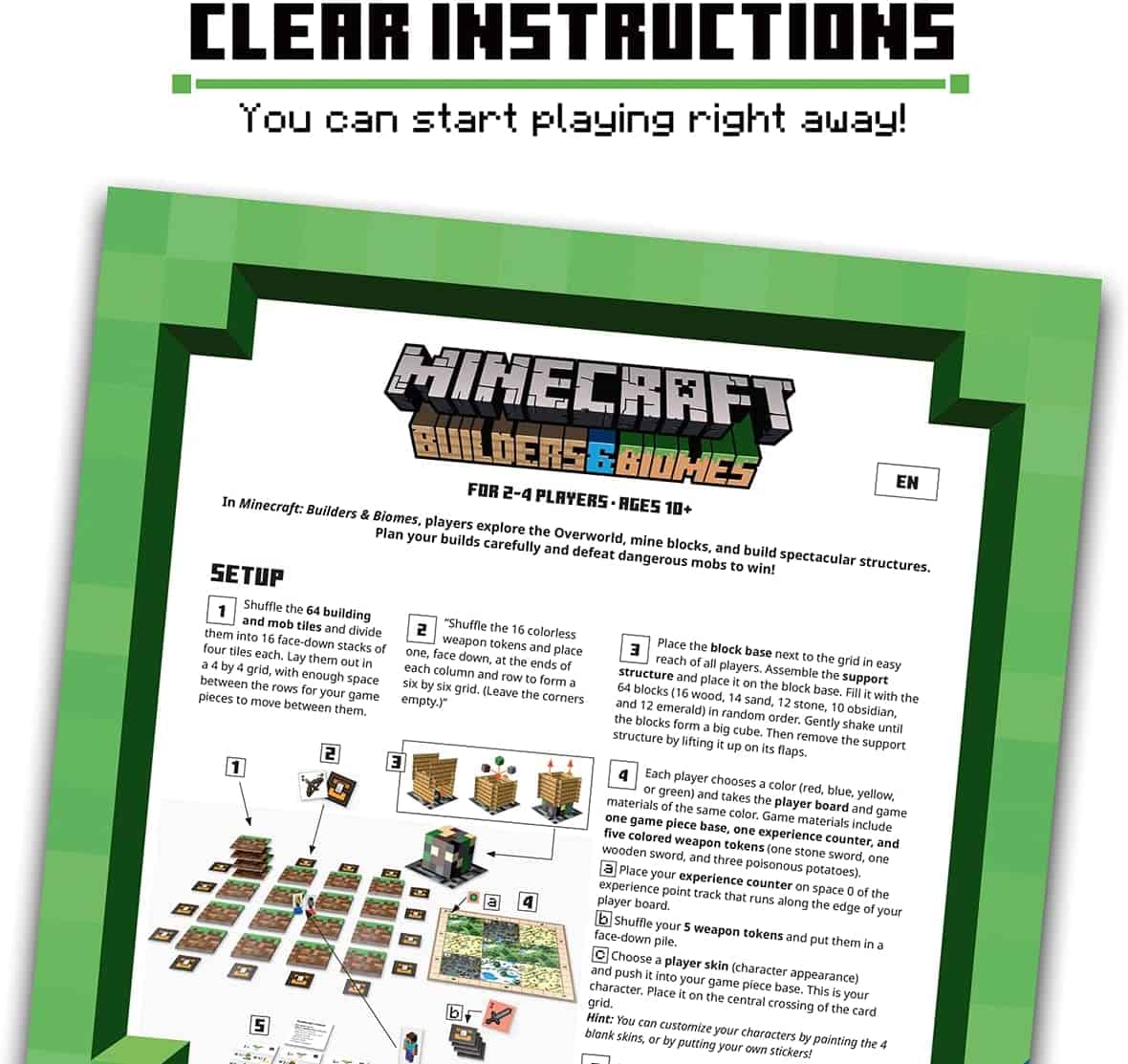
The first player to take a turn should be the one who most recently found a diamond in Minecraft.
Each turn, you must perform two actions of your own choosing – they have to be different actions; you can’t repeat the same one twice.
Play continues clockwise. There are three scoring rounds; the player who has the most experience points after the third round wins the game.
Actions
There are five main actions you can carry out in the game:
- Collect blocks
- Explore the Overworld
- Build
- Fight a mob
- Collect a weapon
Collect Blocks

Blocks, also referred to as materials, can only be collected if their top side and at least two more sides are exposed. As long as this is the case, you can choose any block from any layer of the big cube, adding them to your personal supply.
Explore the Overworld
Begin by moving your character zero, one, or two spaces. These are the crossing points in the grid of card stacks and weapon tokens. You shouldn’t ever put your character on a card or token.
After this, reveal the top cards of all four stacks around your position. If they have already been turned over, leave them as they are.
Multiple characters can occupy the same space. Even if a stack is empty, you still have to move between rather than over it.
Build
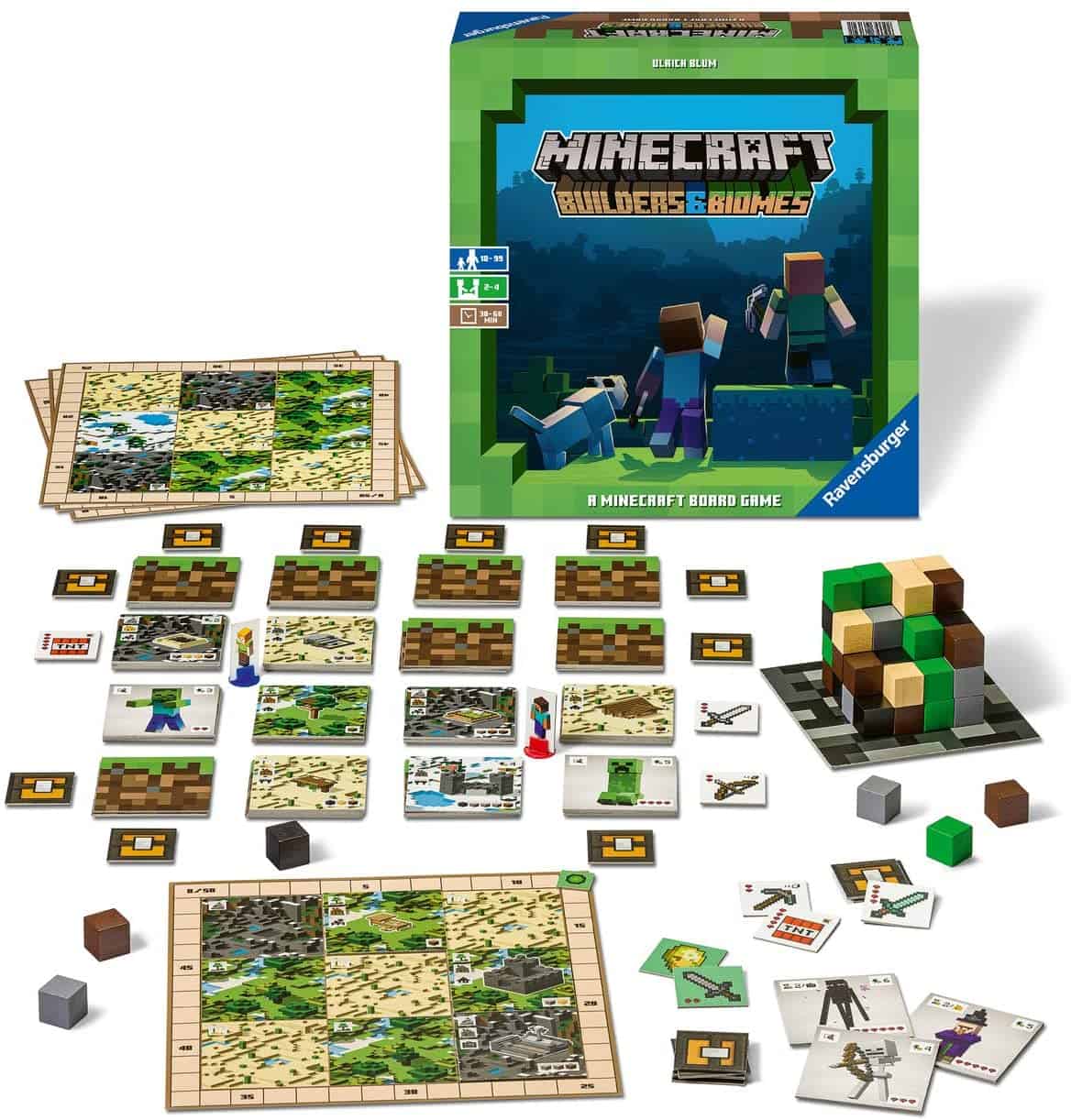
Your character must be next to the corresponding building card on the grid to build a structure. The blocks required for that structure will be shown in the bottom right-hand corner – you must possess all of them to go ahead with the build.
If you do go ahead with it, return the blocks from your supply to the game box.
You can use a green emerald block to replace any other block.
When it comes to structures that require a lot of blocks and are therefore difficult to build, you will earn experience points as specified on the card and should move your experience counter the correct number of spaces.
Fight a Mob
Some cards in the grid are dangerous mobs that you can attempt to defeat if your character is next to a revealed card. To do this, shuffle your face down pile of weapon tokens and reveal three.
Count the number of revealed hearts on these cards and compare it to the number of hearts on the mob card – if you have at least as many hearts, you defeat the mob. You can then place the mob card next to your player board and collect experience points.
Collect a Weapon

Your character has to be next to a weapon token to collect that weapon. Shuffle it into your pile of existing tokens.
There are four weapons with special abilities that you should be aware of:
- Bow – Whenever you reveal a bow in a fight, you can also reveal an additional weapon token
- Golden hoe – Revealing a golden hoe during a fight automatically earns you two experience points
- Stone pickaxe – Revealing this weapon allows you to collect one block from the big cube
- TNT – You can choose to detonate a TNT token if it’s revealed during a fight. Count the hearts on the card; detonated TNT is put back in the box.
Scoring
As previously mentioned, there are three occasions when scoring takes place.
The first round happens when any player completely mines the first layer of blocks from the big cube. The second round occurs when any player completely mines the second layer. Finally, as you might have guessed, the third round happens when the third layer has been thoroughly mined.
It’s important to note that scoring only takes place once you have completely finished your turn. If multiple layers are depleted during the same turn, the scoring rounds happen in the usual order.
How to Score
In the first round, you select one biome: forest, snowy tundra, desert, or mountains. Identify the largest group of connected spaces that share this characteristic; you gain the number of experience points printed on the scoring board for each space.
The same scoring technique applies to each round; the second one is related to materials (wood, sand, stone, obsidian), and so on.
End of the Game
After the third scoring round, the game comes to an end. Score your mobs and work out how many experience points you have earned.
Compare your number of experience points with that of other players – the player with the highest number wins. If it’s a tie, the player with the most blocks wins.
Who is Minecraft: Builders and Biomes for?
The game is recommended for two to four players aged ten and above.
While it’s true that existing fans of Minecraft will likely enjoy this board game the most. You don’t need to know anything about the original video game to play or, indeed, to enjoy it.
The game is pretty straightforward, so I’d definitely recommend it for kids and families. Unfortunately, however, it doesn’t require enough strategy or thought to make it appealing to older audiences.
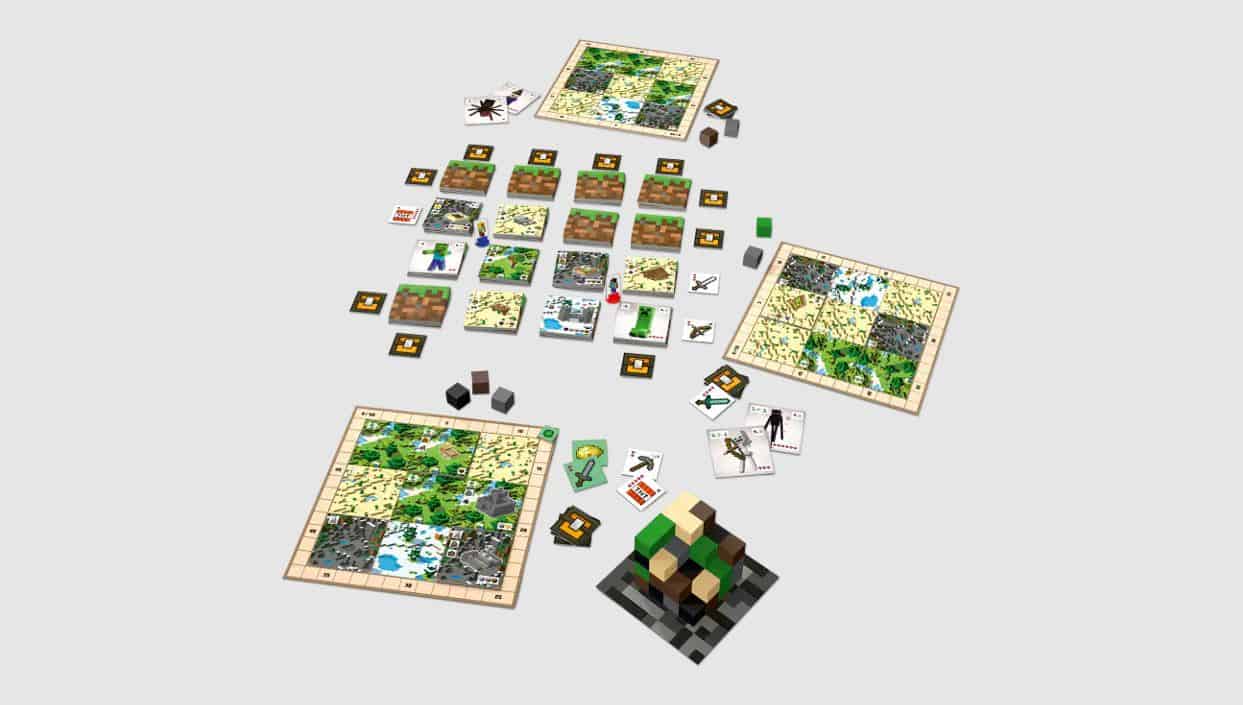
How Many Pieces are There in Minecraft: Builders and Biomes?
This board game contains several high-quality pieces, as listed below.
- 64x resource cubes
- 64x building and monster cards
- 36x weapon tokens
- 4x player boards
- 4x experience counters
- 4x character skins
- 4x game piece bases
- 12x overview cards
- 1x resource cube base
- 1x support structure
- Rulebook
Alternatives to Minecraft: Builders and Biomes
Here are a few board games I’d recommend as alternatives to Minecraft.
Wayfinders
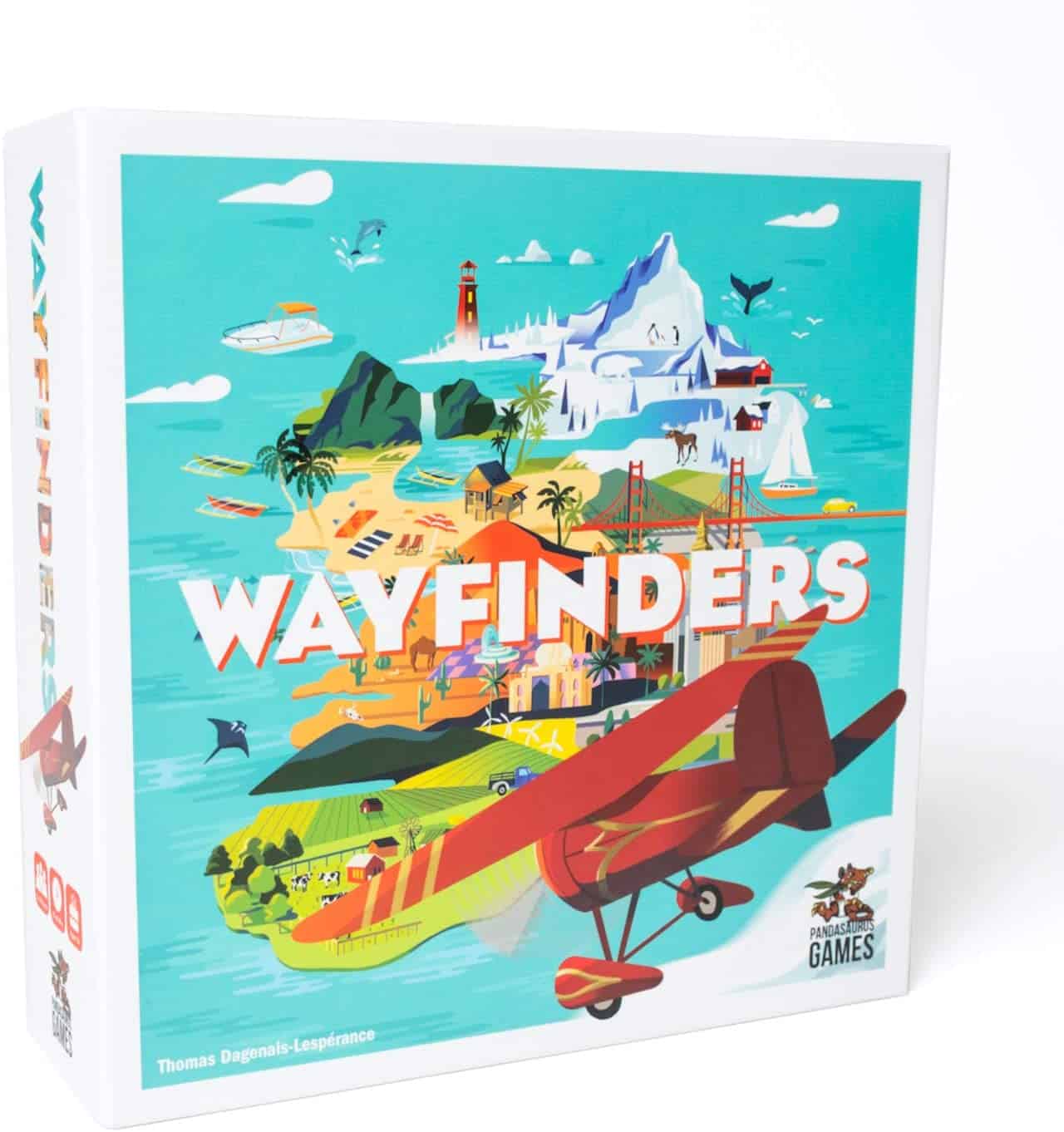
From the award-winning designer of Decrypto comes Wayfinders, an immersive strategy game that focuses, like Minecraft, on exploration. To succeed, you’ll need to think on your feet and build the right airplane routes to help you reach unexplored lands!
- Players – 2-4
- Recommended age – 10+
- Playing time – 20 to 45 minutes
What Next?
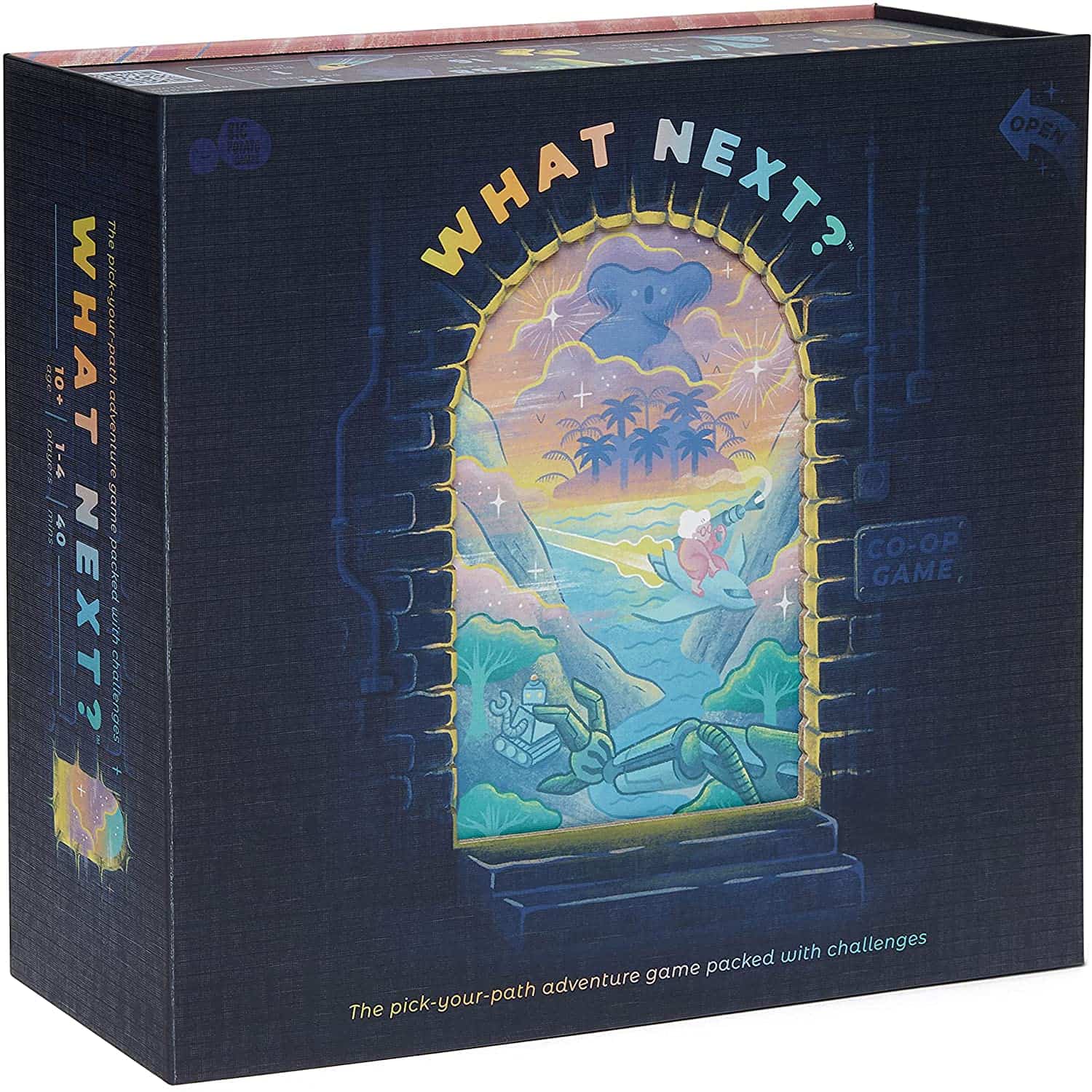
What Next? is a really fascinating game because it allows you to pick your own path as you play, drastically changing the game’s direction with each decision. In addition, it contains over 60 action-packed challenges which allow you to pick your path together…or go it solo.
- Players – 1-4
- Recommended age – 10+
- Playing time – 45 to 60 minutes
Blokus
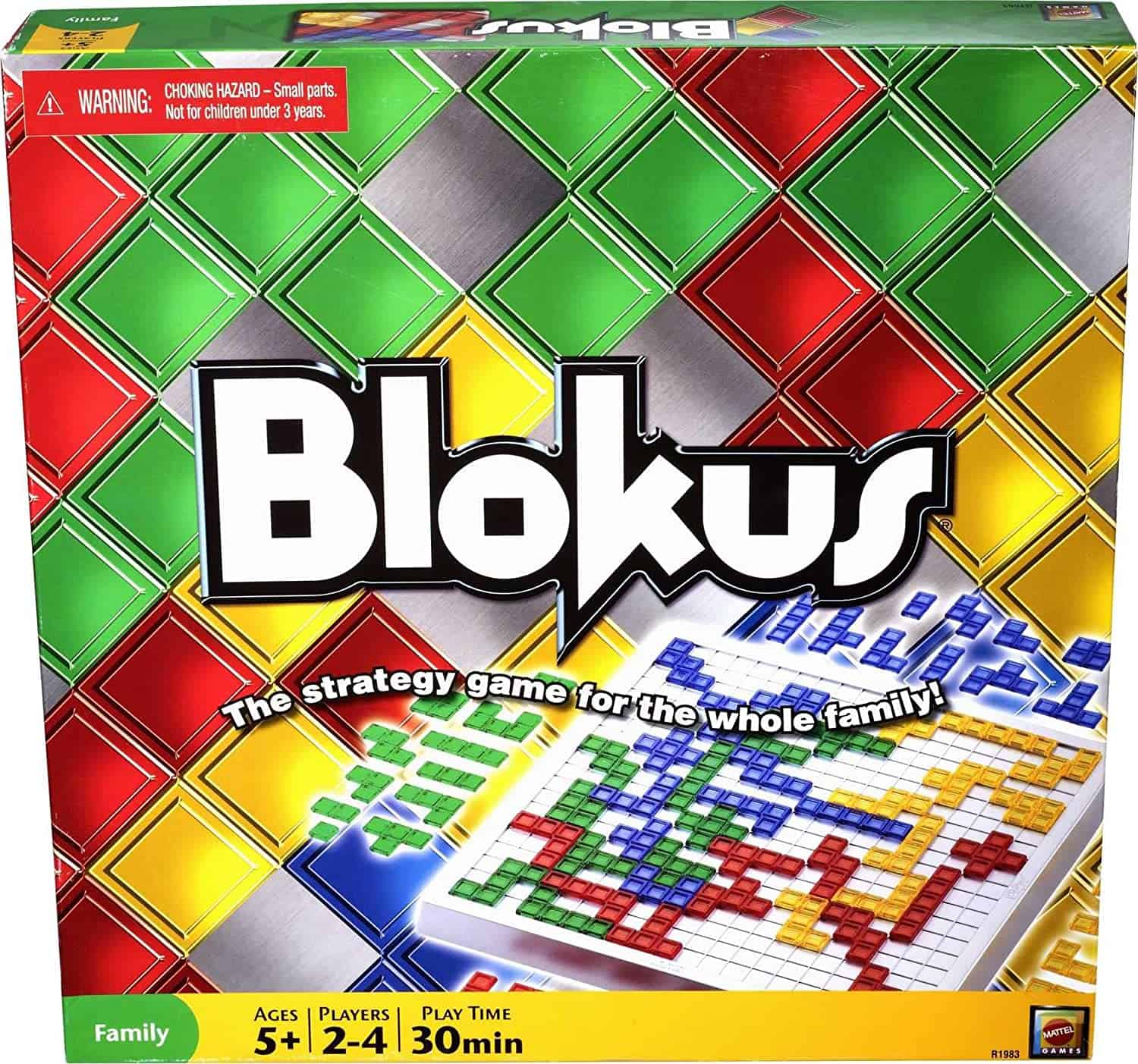
Like Minecraft, Blokus centers around blocks that can be arranged and rearranged on the game board. Still, it’s an even better family game because it demands more strategy. Plus, it can get very competitive because you have to stake your claim and protect your territory, but you must also try to block your opponents!
- Players – 2-4
- Recommended age – 5+
- Playing time – 60 minutes
Minecraft: Builders and Biomes – is it Worth Buying?
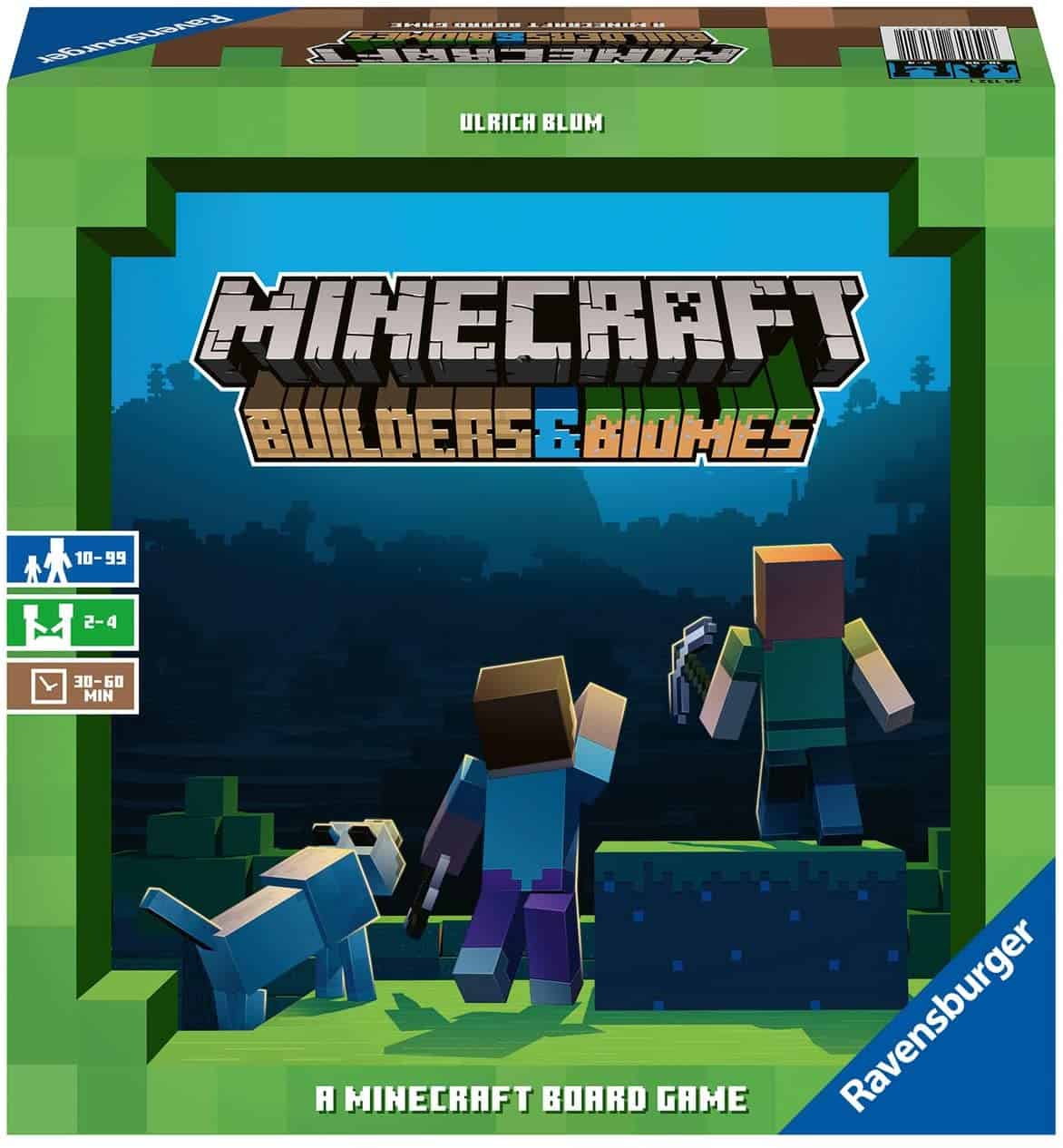
To be totally honest, I probably wouldn’t recommend Minecraft: Builders and Biomes to anyone who isn’t already a fan of the original video game.
Yes, the board game is fun to play, and it has undoubtedly been well-designed. Still, it’s a product that has been created to cater to a very specific demographic. I’m not so sure it holds its own outside the context of Minecraft fandom.
It has some solid strategic elements, but I don’t think these are complex enough to appeal to a broader audience. This is less a fault of the game itself and more a limitation of the original source material when translated into the medium of a board game.
The thing that makes Minecraft so great is its expansiveness; you can roam anywhere and transform the world around you. Some of that appeal is lost when you try to capture it in a board game.
It’s worth buying Builders and Biomes for young kids who are Minecraft mad because the game will easily provide hours of fun. I’d suggest shopping around before deciding for anyone else because there are so many other fantastic board games out there, and this one, though high quality, is also relatively niche.
Frequently Asked Questions
Questions: Can you play Minecraft: Builders and Biomes solo?
Answer: Unfortunately, it isn’t possible to play the game solo, but there are plenty of great board games out there that you can play on your own.
Question: How long does it take to play Minecraft: Builders and Biomes?
Answer: It takes between half an hour and an hour, depending on whether you want a casual or intense game and how many people you’re playing with.
Question: What materials are the cubes made out of in Minecraft: Builders and Biomes?
Answer: They are made out of wood. In fact, all of the game’s components are very high quality.
Question: Is Minecraft: Builders and Biomes language-dependent?
Answer: The instructions come in English and five other languages, so the game isn’t language-dependent. It relies instead on visual cues.
Another visual game I’d recommend is Illusion – you can read our card game guide here.
Recommended reads:
- The Ultimate Catan Explorers and Pirates Guide
- The Ultimate Jumanji Board Game Guide
- How to Find the Best Family Board Games
- Stratego Pieces Explained – Must-Know Facts - February 28, 2023
- Wahoo Board Game Guide – AKA Aggravation Guide - February 22, 2023
- Pokemon Monopoly Guide - February 22, 2023


